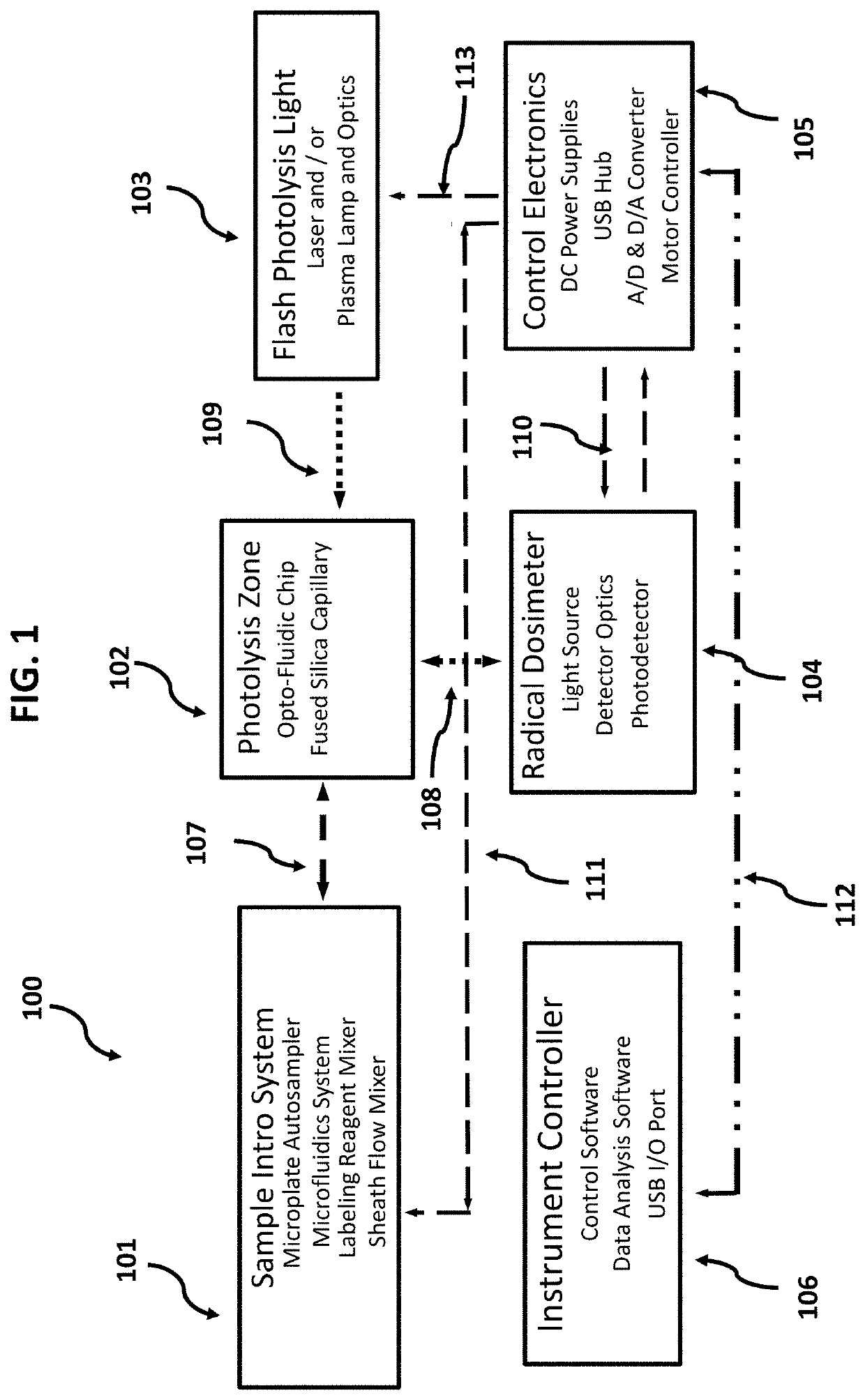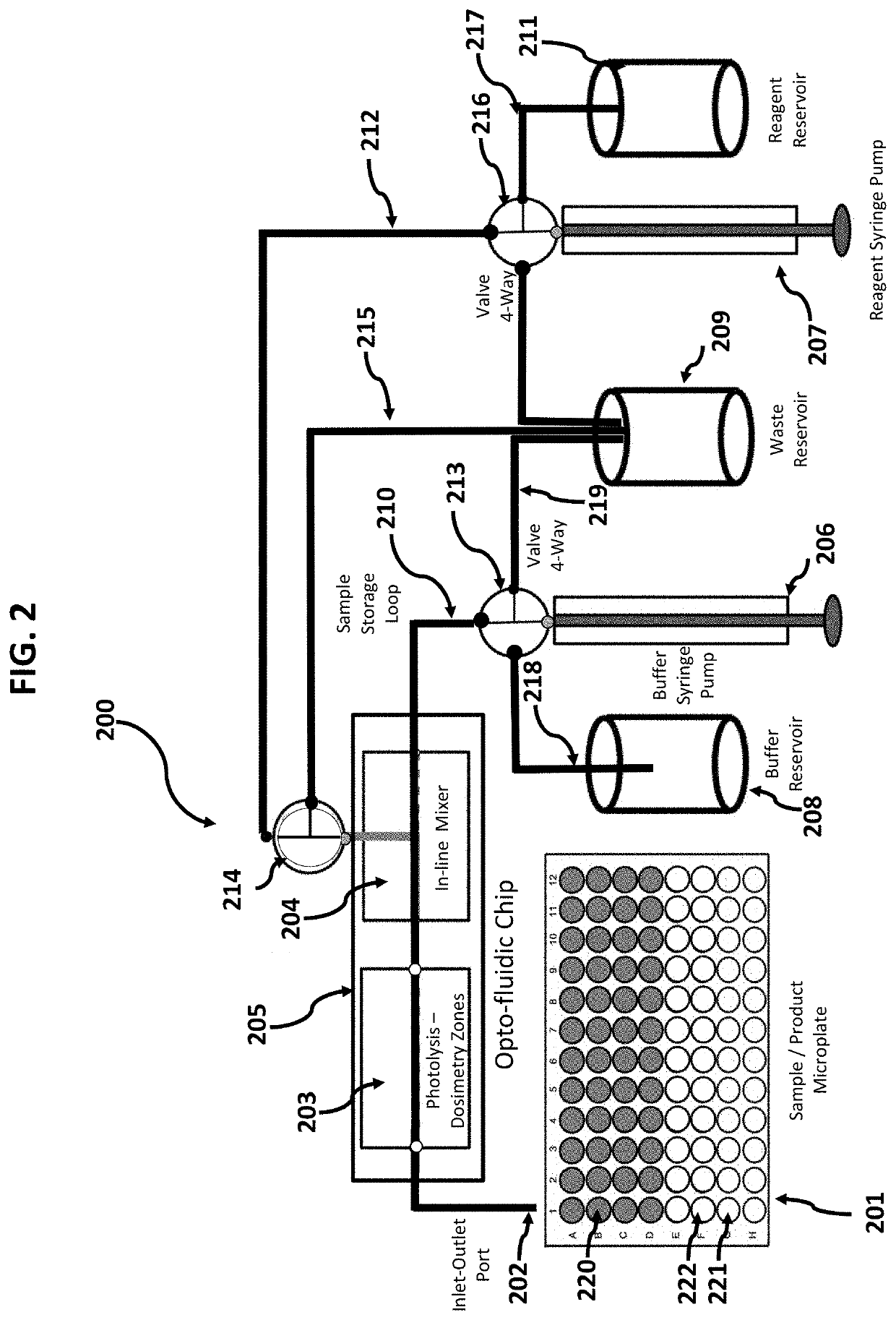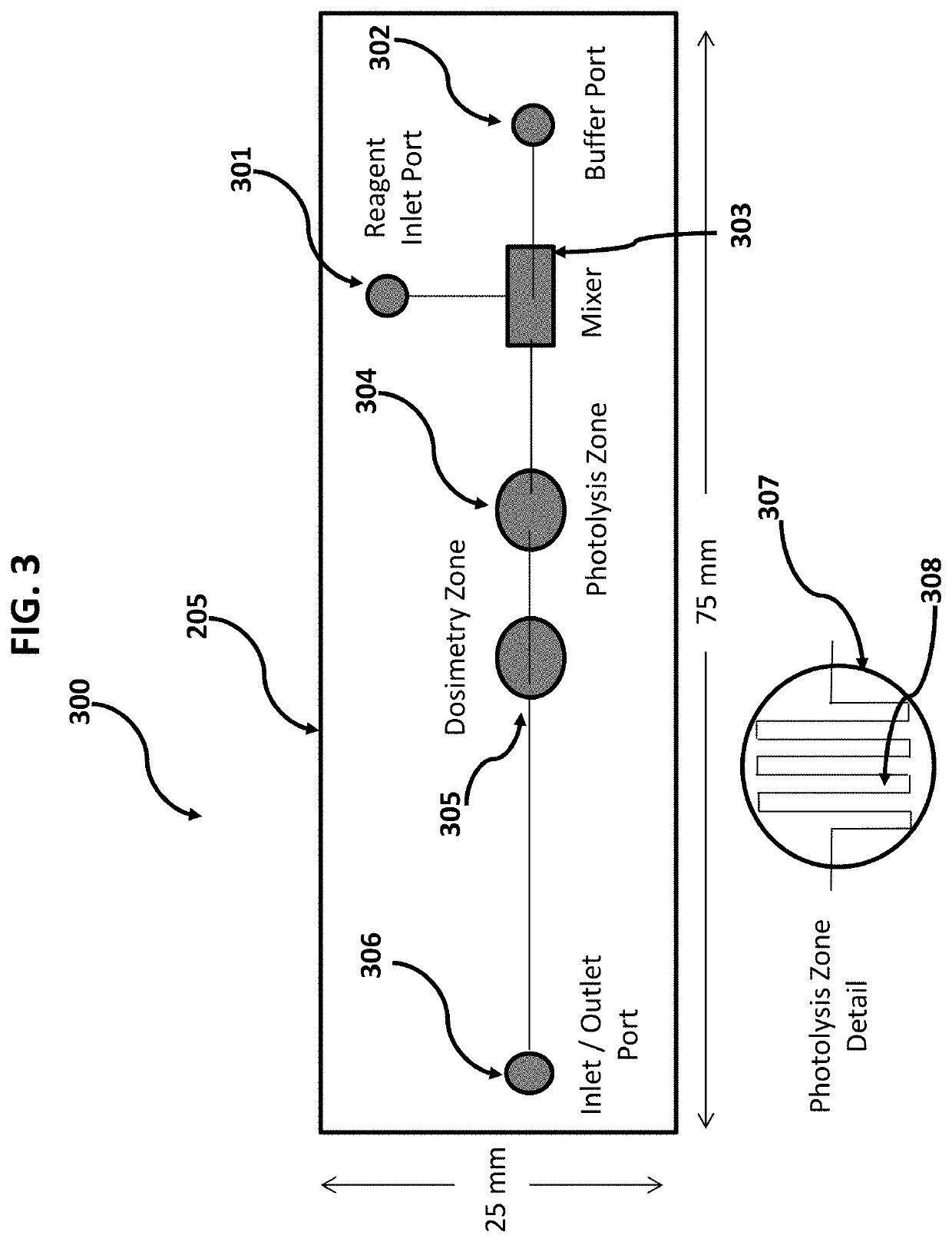Opto-Fluidic Array for Radical Protein Foot-Printing
a technology of fluorescence array and radical protein, which is applied in the field of optofluidic array for radical protein footprinting, can solve the problems of morbid and fatal patient consequences, adverse pharmacological consequences, and substantial financial loss to the biotherapeutic industry, and achieve the effect of increasing the illuminated volum
- Summary
- Abstract
- Description
- Claims
- Application Information
AI Technical Summary
Benefits of technology
Problems solved by technology
Method used
Image
Examples
Embodiment Construction
[0046]Devices and methods are provided for the analysis of biomolecular higher order structure that is accomplished by selective labeling of solvent exposed molecular groups, as catalyzed by on-chip in vivo or in vitro fast photo-oxidation with real-time monitoring and control of effective radical concentration. Moreover, devices and methods are provided for the analysis of biomolecular higher order structure that is accomplished by on-chip, in-line microfluidic mixing of labeling reagents with target proteins, cells or other in vivo embodiments. Moreover, devices and methods are provided for the analysis of biomolecular higher order structure that is accomplished by on-chip, microfluidic channels that serve to create sheath flow to support in vivo fast photo-oxidation reactions. Moreover, devices and methods are provided for the analysis of biomolecular higher order structure that is accomplished by on-chip, in line photo-chemically induced reactions using an integral serpentine ph...
PUM
 Login to View More
Login to View More Abstract
Description
Claims
Application Information
 Login to View More
Login to View More - R&D
- Intellectual Property
- Life Sciences
- Materials
- Tech Scout
- Unparalleled Data Quality
- Higher Quality Content
- 60% Fewer Hallucinations
Browse by: Latest US Patents, China's latest patents, Technical Efficacy Thesaurus, Application Domain, Technology Topic, Popular Technical Reports.
© 2025 PatSnap. All rights reserved.Legal|Privacy policy|Modern Slavery Act Transparency Statement|Sitemap|About US| Contact US: help@patsnap.com



